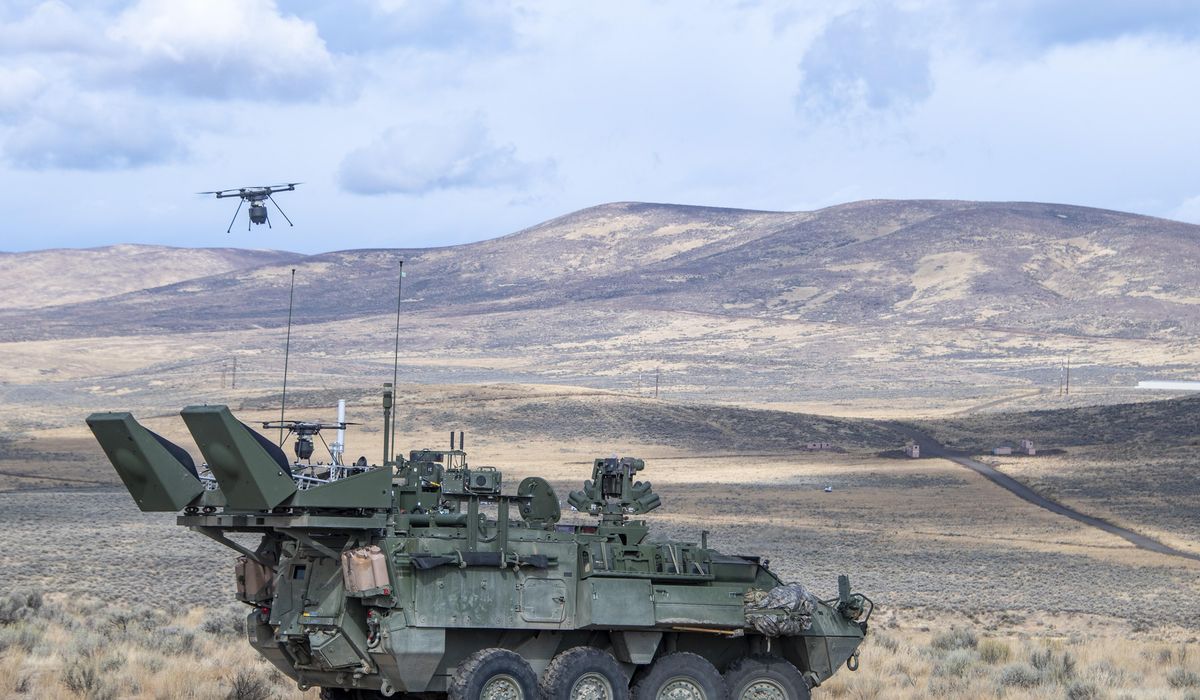


Don’t miss the full story from our staff writers, whose reportage is the basis of this article.
The Pentagon and defense industry are racing to develop affordable counter-drone technologies to combat the growing threat of cheap, lethal tactical drones used by adversaries and potential terrorists. This urgent mission took center stage at the Association of the U.S. Army conference in Washington, where the exhibition floor showcased various counter-drone capabilities including electronic warfare systems, signal jammers, and drone-catching nets.
Military officials emphasized that the diverse nature of drone threats requires multiple solutions rather than a one-size-fits-all approach. Maj. Gen. David Stewart highlighted this need during conference panel discussions, noting the wide breadth of threats facing both military and civilian targets.
The counter-drone challenge extends beyond foreign battlefields to domestic soil. Following mysterious drone sightings over the East Coast in December 2024 that triggered national security concerns, lawmakers have expressed alarm about potential drone threats to major events including the Super Bowl, 2026 World Cup, 2028 Summer Olympics, and political rallies. A key concern is preventing collateral damage to bystanders when neutralizing drones near large crowds.
Col. Marc Pelini explained that identifying capabilities that can safely bring down drones without harming innocent people is crucial for homeland security operations. The military is seeking “best of breed capabilities” to address the full spectrum of drone threats.
The counter-drone industry’s expansion mirrors the proliferation of commercial and military drones in recent years. Small unmanned aircraft, often improvised with explosives, have played central roles in the Russia-Ukraine war, creating immense pressure to develop effective countermeasures, particularly against sophisticated drone swarms.
Tom Konicki from Honeywell Aerospace Technologies called drones a “galvanizing threat” affecting everyone from law enforcement to airports to military operations. Honeywell displayed its SAMURAI system at the conference, which can track up to 400 incoming drones using radars and cameras, jam their communications, or deploy a “drone capture drone” that fires nets to capture enemy craft.
The challenge is especially acute for tactical-level operations. Small drones costing just thousands or even hundreds of dollars, used effectively in Ukraine and by groups like Yemen’s Houthi rebels, cannot be practically countered with million-dollar missiles or traditional manned aircraft. This reality has sparked innovation in affordable solutions like Israel Weapons Industries’ ARBEL system, which enhances standard AR-15 rifle accuracy against drones, and laser weapons systems moving from science fiction to practical deployment.
This article is written with the assistance of generative artificial intelligence based solely on Washington Times original reporting and wire services. For more information, please read our AI policy or contact Ann Wog, Managing Editor for Digital, at awog@washingtontimes.com
The Washington Times AI Ethics Newsroom Committee can be reached at aispotlight@washingtontimes.com.
